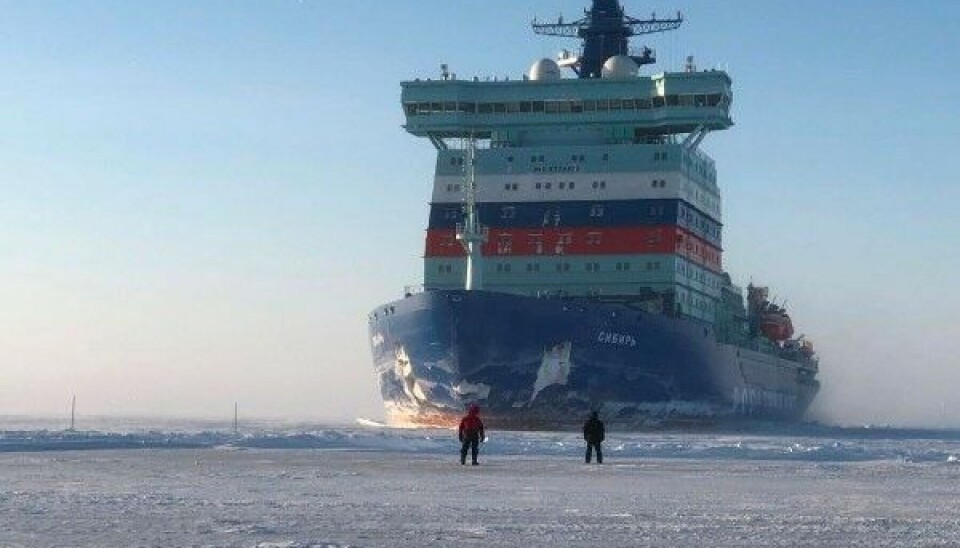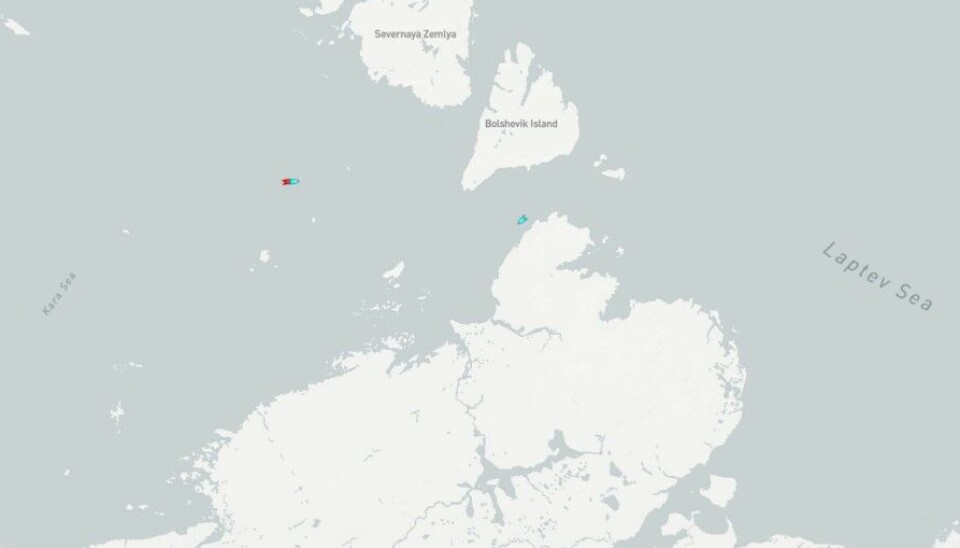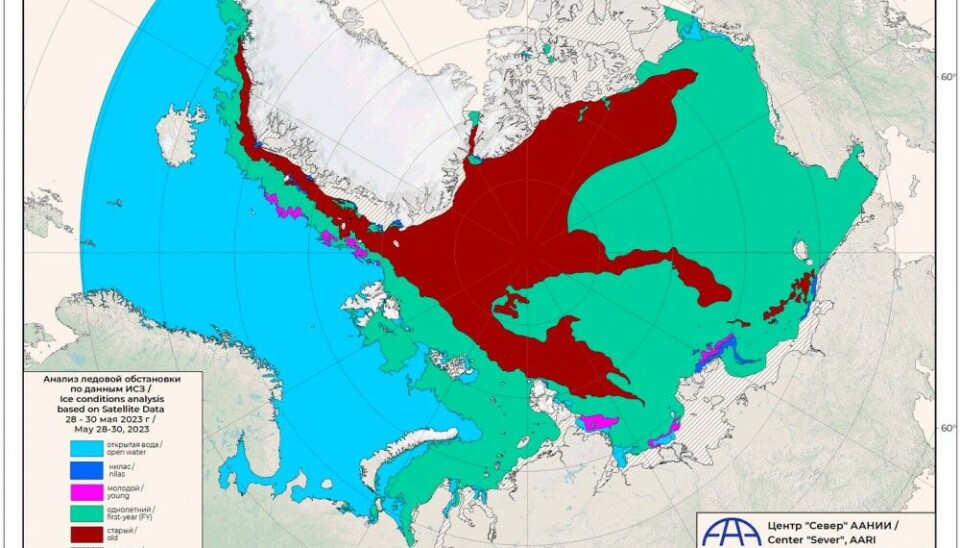
Two icebreakers escort gas tanker in first summer shipment on Arctic route
Ice lies thick on the water as nuclear powered icebreakers "Sibir" and "Arktika" escort LNG carrier "Fedor Litke" into the Vilkitsky Strait en route to a Northeast Asian port.
Icebreaker Sibir had been waiting several days in the eastern parts of the Kara Sea when it on the 6th of June teamed up with the Arktika and Fedor Litke in a convoy.
Shortly later, the three vessels approached the Vilkitsky Strait, the 130 km long passage between the Russian mainland and archipelago of Severnaya Zemlya.
The Fedor Litke carries liquified natural gas from the Yamal LNG and is expected to head to a terminal in Northeast Asia.

The Vilkitsky Strait is considered one of the most tricky parts for ships sailing on the Northern Sea Route. Sea ice lies thick across the area through most of the year and conventional ships normally need assistance from powerful icebreakers to make it thought.
As the three vessels now break their way into the strait, there is still a solid ice sheet covering the waters. Although the Fedor Litke is capable of making its way through more than 1,5 meter thick sea-ice, it is escorted by two of Russia’s most powerful icebreakers.
It is not clear whether both the Sibir and the Arktika will accompany the LNG carrier all the way across the Arctic voyage.

But powerful escort is clearly needed. Maps from the Russian Arctic and Antarctic Research Institute show that there is sea-ice almost across the whole Russian Arctic, from the Kara Sea in the west to the Chukchi Sea in the east. In parts of the Laptev Sea and East Siberian Sea there are belts of multi-year ice that are far harder to navigate through that the one-year old sheet.
Figures from the U.S Snow and Ice Data Center show that average sea ice extent in the region during May 2023 was 12.83 million square kilometers, the thirteenth lowest May in the satellite record.
Russia has an ambition to start year-round sailing on the Northern Sea Route. But so far, there is a long way to go before the country has the icebreaking capacities needed.
The situation is made no easier by difficult sea-ice conditions. Both in 2021 and 2022, major parts of the Russian Arctic waters froze already in October and shipping became risky without icebreaker assistance. In 2021, more than 20 ships got stuck as the water froze earlier than expected by the shippers.
The ongoing voyage by the Sibir, Arktika and Fedor Litke is the first across the eastern parts of the Northern Sea Route since the Boris Vilkitsky sailed from Tianjin, China, to Yamal in mid-January.
Whereas transit shipments across the Northern Sea Route remain rare, destination shipments have boomed over the past years. All through the winter of 2023, ships have shuttled to seaports and terminals along the Russian Arctic coast.
Tankers that carry LNG from Yamal still dominate the picture. But they are increasingly joined by ships loaded with construction materials to a handful of major new industrial projects, among them coal project Syradasayskoye, Rosneft’s oil project Vostok Oil and Novatek’s Arctic LNG 2.
As the new project come into production, shipments in the Russian Arctic waters are expected to surge. Russian authorities envision an increase from today’s 34 million tons to 200 million tons in 2030.















